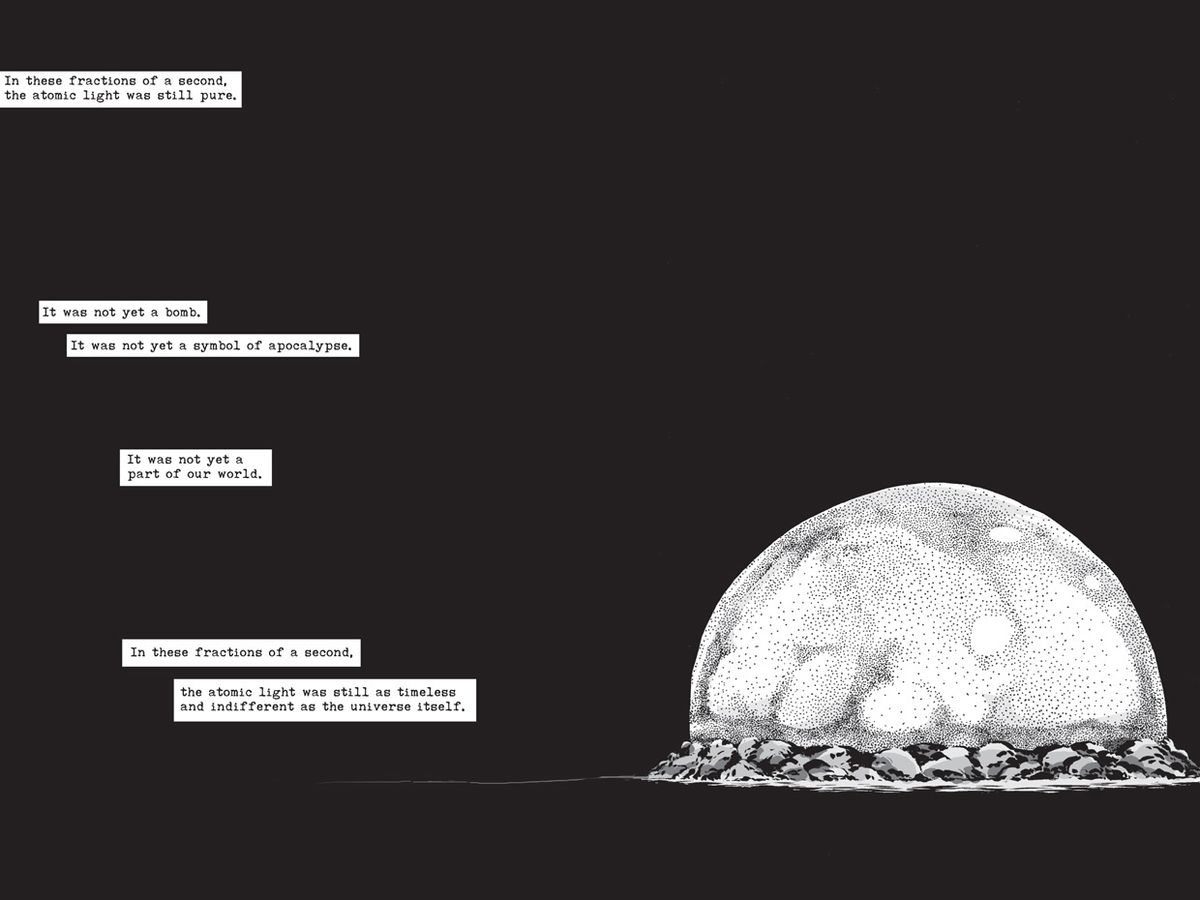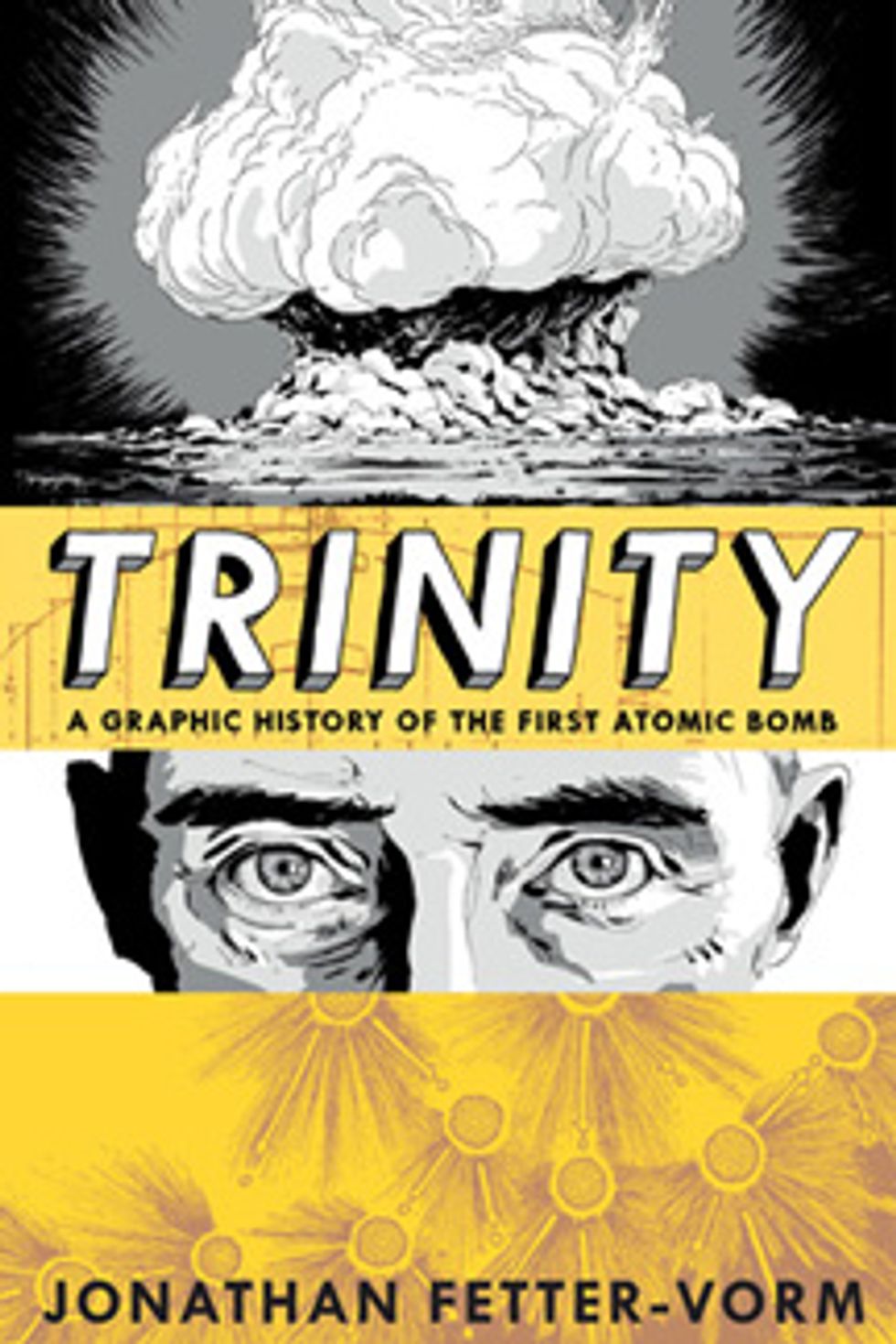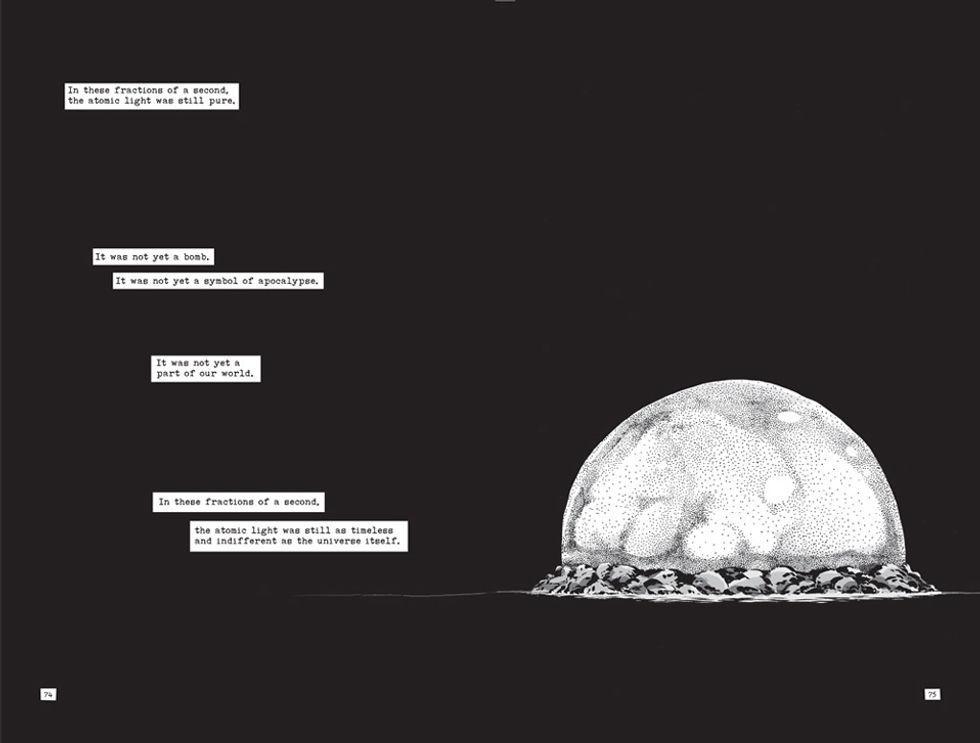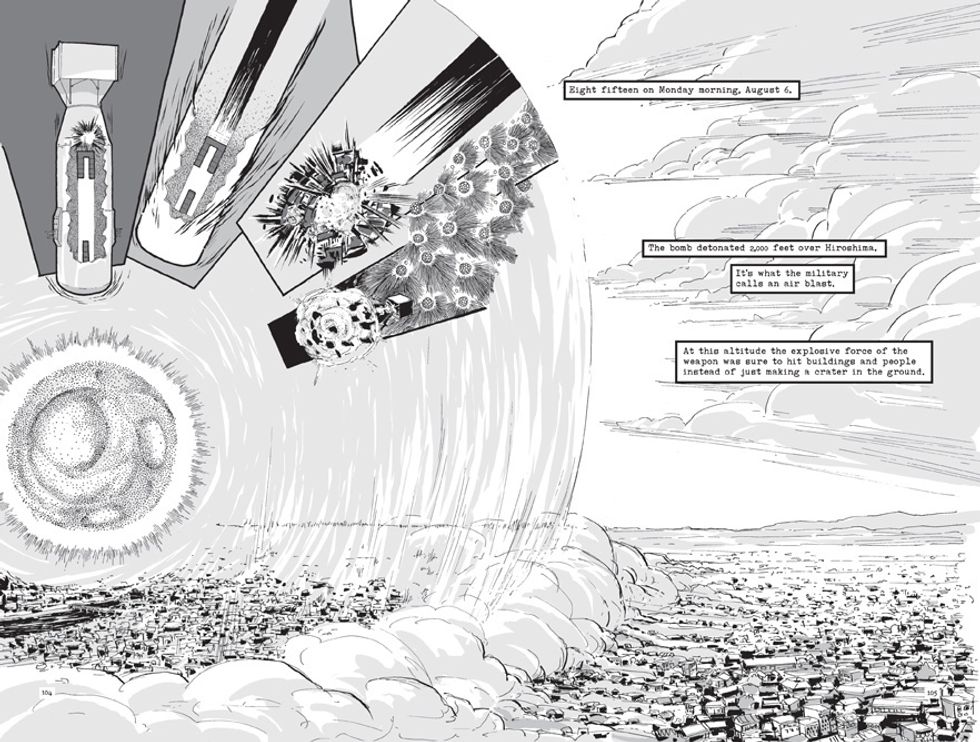Reviewed by Glenn Zorpette
By Jonathan Fetter-Vorm; Hill and Wang, 2012; 160 pp.; US $22; ISBN 978-0-8090-9468-4
The story of the Manhattan Project, which yielded the world’s first three atomic bombs, is one of the most remarkable and gripping in all of human history. This complex saga has been revisited in novels, motion pictures, opera, and in countless nonfiction books. There aren’t many formats left, but Jonathan Fetter-Vorm has managed to do something new—he’s written a graphic novel about it.
Trinity: A Graphic History of the First Atomic Bomb breaks new ground in content as well as form. Not many angles of this sprawling piece of history have escaped treatment. All the major players have had biographies, in some cases more than one. The technical, scientific, administrative, espionage, and military aspects have all been picked over. There are memoirs and photo books. There is even a tome devoted to the British scientists who worked on the project. But there are no compact accounts that compellingly capture the project’s magnitude, human drama, science, intrigue, stupendous technical triumph, as well as its immediate legacy of devastation and suffering and its fundamental alteration of geopolitics.
This audacious little book does all that. In several hundred deftly rendered images spread over 151 pages, Fetter-Vorm begins with the Trinity test and works his way to the Cold War arms race of the 1950s. Along the way, in a compact but illuminating digression, he breezily recounts the breakthroughs of such pioneers as Marie Curie, Ernest Rutherford, James Chadwick, Otto Hahn, Fritz Strassman, and Lise Meitner.
If you’ve read Richard Rhodes’s landmark The Making of the Atomic Bomb (Simon & Schuster, 1986), there won’t be any facts here that are new to you. But that’s beside the point. Fetter-Vorm, a 2006 graduate of Stanford University, uses the conventions of graphic novels ingeniously to convey such disparate concepts as the odd, cloistered suburban lives of Manhattan Project workers and their families, basic nuclear-physics principles, Robert Oppenheimer’s personal turmoil, Leslie Groves’s gruff pragmatism, and the apocalyptic devastation wreaked by the explosions in Japan. The book’s full-spread panels depicting the blasts at White Sands, Hiroshima, and Nagasaki are little masterpieces, all the more piercingly trenchant for their stark simplicity. As with Art Spiegelman’s landmark graphic novel, Maus , about the Holocaust, a literary form that seems too childlike for such a serious subject becomes a powerful medium to capture events so dramatic as to seem unreal.
The overall effect is so poignant that it makes you wonder why it took so long for someone to produce such a book. After all, the Manhattan Project unleashed awesome cosmic forces on Earth, by means of technology seemingly pulled from the future. Throw in its cast of otherworldly geniuses, heroes, and villains and you have exactly the kind of raw material that has traditionally gone into comic books and their long-form progeny, graphic novels.
In fact, a comic book series that fictionalizes the U.S. atom bomb quest was launched around the same time that Fetter-Vorm’s book was released: The Manhattan Projects, created by writer Jonathan Hickman and artist Nick Pitarra.
Fetter-Vorm’s book might have once seemed an oddity—too erudite for comic book fans, too dramatic for WWII and history buffs. But the success of such graphic nonfiction books as Persepolis and more recent works about Richard Feynman and Steve Jobs, as well as Maus , shows that there is an audience for this burgeoning new literary category.
Most of all, the appearance of this book shows the timelessness of its story. In all likelihood the subject will continue inspiring writers and artists and ultimately pass into legend, like the building of the Giza pyramids and Hannibal’s crossing of the Alps. Every generation has found something new in it, and will likely keep doing so for many more to come.
For more book reviews, see the full list.



